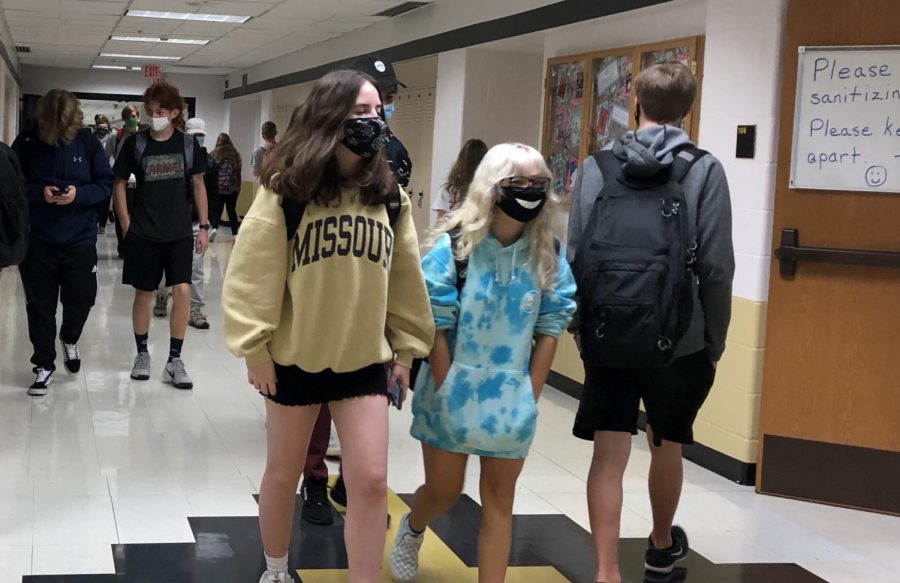Q&A with Nathanael Hostetler on Contact-Tracing and Student Quarantines
Published: September 17, 2020
FHN has been in school for nearly three weeks. The school and district have put mask and distancing protocol in place to lower the risk of contracting COVID-19, and created quarantine policies for students in close contact with those who tested positive for the virus. Head principal Nathanael Hostetler answered questions on the number of COVID-19 cases and quarantined students, the criteria required for a school shutdown and the importance of maintaining the mask policy.
Do you have the approximate number of COVID-19 cases versus people who have been contact-traced at FHN?
“Yes. We’ve had, in this building so far, three cases. All three are active but one will become inactive soon. Currently we have 79 people who are quarantined, and those are the close contacts.”
What’s your current outlook on the number of COVID-19 cases and how do you think we’re doing as a school?
“I would always like it to be less. The way to think of this is that it doesn’t just happen once, it’s this rolling thing. We have kids coming back in a couple days. If we stay at this average, where about six or seven percent of our population is in quarantine at any given time, that’s sustainable. We can do that. In fact, we could probably handle a little higher percentage, but the lower the percentage, the better.
The way I’m starting to think of this is just tracking how many are out at any given time and looking at it as a rolling average so that we know exactly where we are. The tough part about that is that it’s hard on kids. It’s really hard on kids to be away for two weeks. But then it’s also difficult for teachers, because they’re not just teaching in-person and potentially virtual, but then remote as well. Essentially, it puts additional work there. Now, we’re supposed to be building everything into Canvas as we go. It’s certainly making things easier, but that doesn’t mean that quarantined students don’t impact a teacher’s workload.”
Is there a certain number of people out that would result in a shutdown?
“The shutdowns will be determined at the central office but it is on a building-by-building basis. We’ve actually had more cases than any other building, but it’s still only three. We’re looking at multiple different metrics. One of them is the actual number of cases. Another is those who are quarantined, cases in the surrounding areas, impactful events.
One thing to bear in mind, too, is the numbers quarantined by a single positive case can vary quite a bit from case to case. For example, if a student who was here three hours a day and then went to CAPs in the afternoon tested positive, we might only send home twelve people. On the other hand, if someone who has been heavily involved – if we had to contact trace through a Wednesday, with all seven periods, Knightime, plus lunch, plus the bus and then say they’re maybe involved in cheerleading, which offers the potential for additional close contact, we end up with a pretty big number. So actual quarantines are less impactful on the possibility of closure than the number of cases.”
How are you and the district communicating with students and parents about cases?
“The district is planning to push out a dashboard a little bit later this week to give a weekly update on how many cases there are in the district, how many are quarantined, things along those lines. If a student is quarantined, if they’re a close contact, they get a direct phone call from either Erin Steepe or Amy Ridling. Then if they’re just a contact, they’ll get an email that says the student was a contact but there’s no need to quarantine. It’s all about space and time.”
What would you like to say to students who are either in-school or quarantined?
“I know that this is going to be an unusual year, and it’s not going to be an easy year, but after two weeks I’m certain that we can get through this, we can take care of each other, and that, at the end of the day, it’s going to be alright. We can handle it, we’ve got this, just be patient and keep taking care of business with masks and distancing.
The thing with masks doesn’t impact the quarantining of close contacts, but what it does do is wildly, massively decrease the odds of catching COVID-19. So while you may be a contact, it’s less likely that you would cause contacts and quarantines in other people. It decreases the probability of that spread. It’s really a two-stage system: quarantine for close contact, wear a mask at all times to prevent transmission. If I have COVID and you’re a close contact, and then you contract COVID, then not only do we have to quarantine my close contacts, but also yours. It becomes a chain. So as long as we wear the masks, we believe the odds of that chain growing past one link are small. That’s what this is all about.”







![JV Girls Basketball Takes A Win To FZE On The First Game Of The Season [Photo Gallery]](https://FHNtoday.com/wp-content/uploads/2024/12/voccer10.24_kwallace-3-300x200.jpg)
![It's Time for the BOE to Respect Student Input [Editorial]](https://FHNtoday.com/wp-content/uploads/2024/11/Untitled_Artwork-1-300x173.png)



